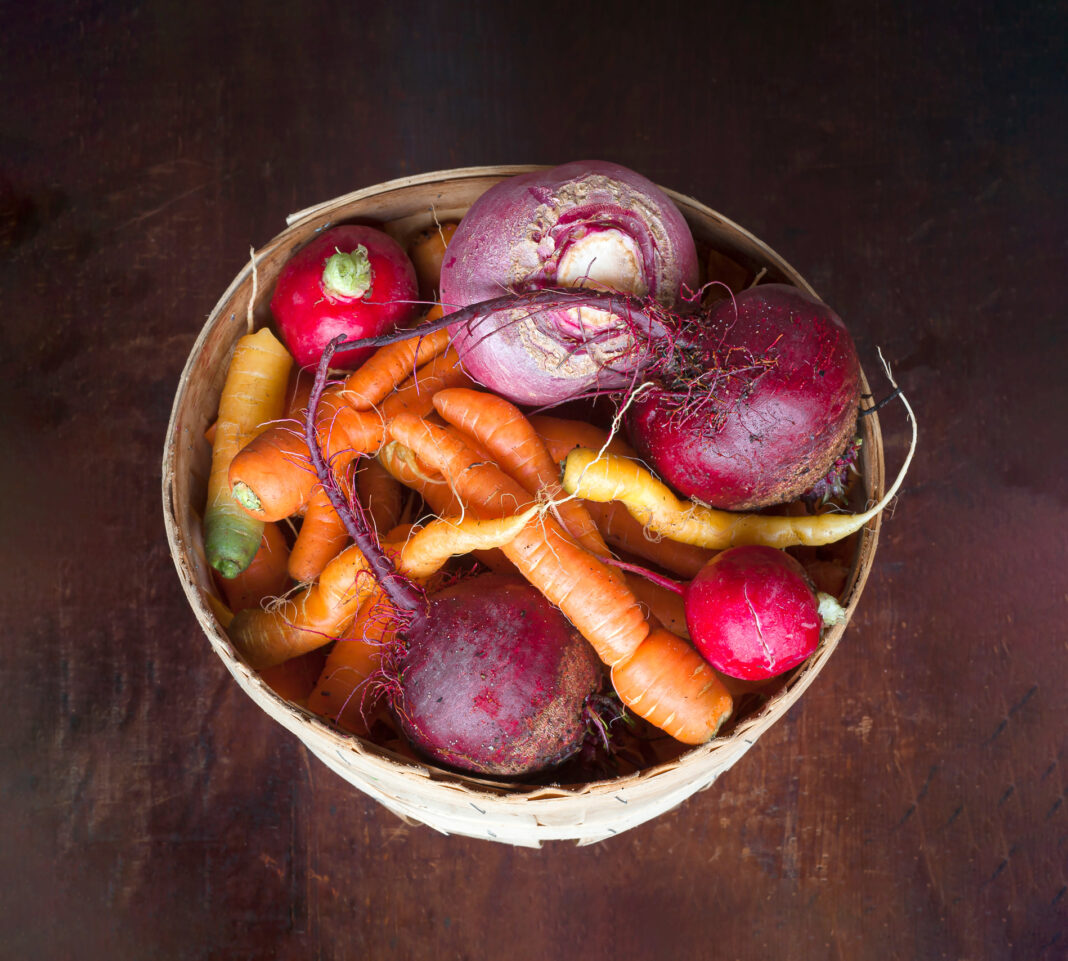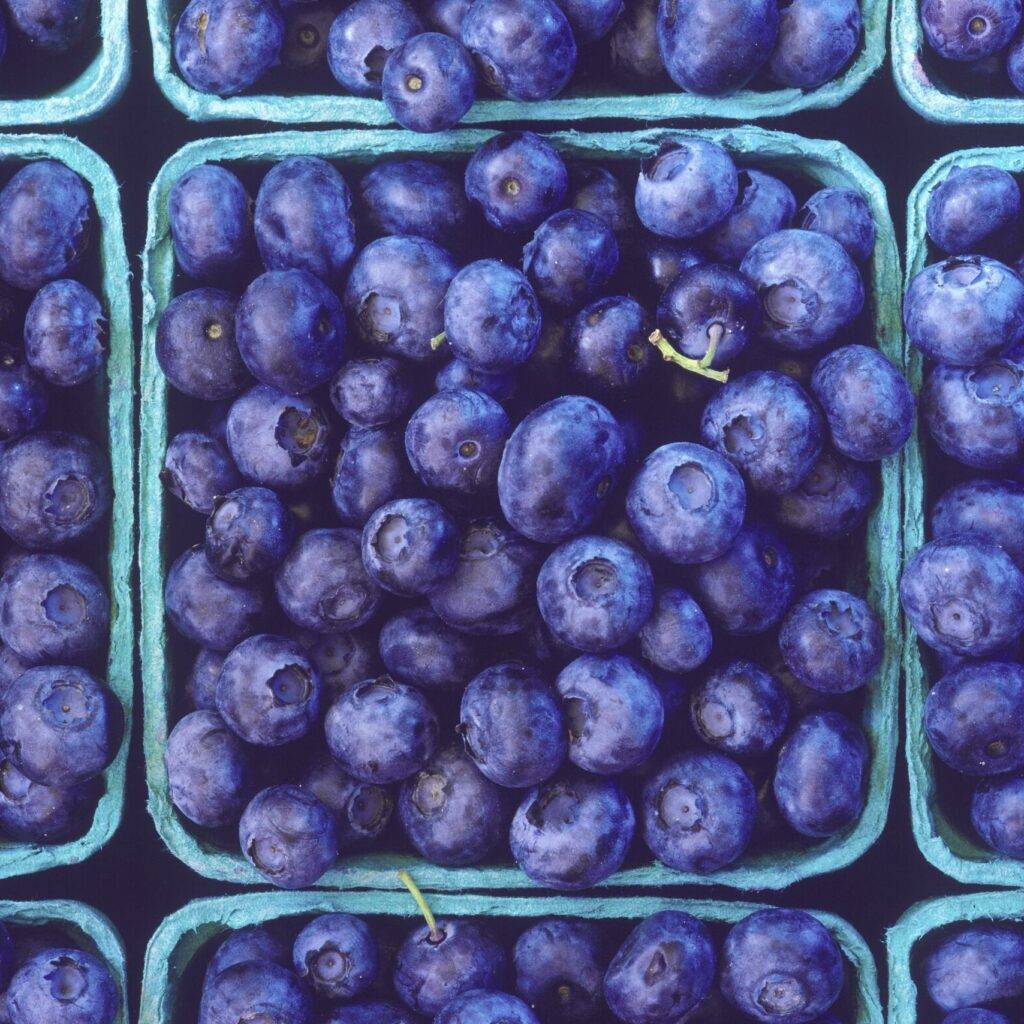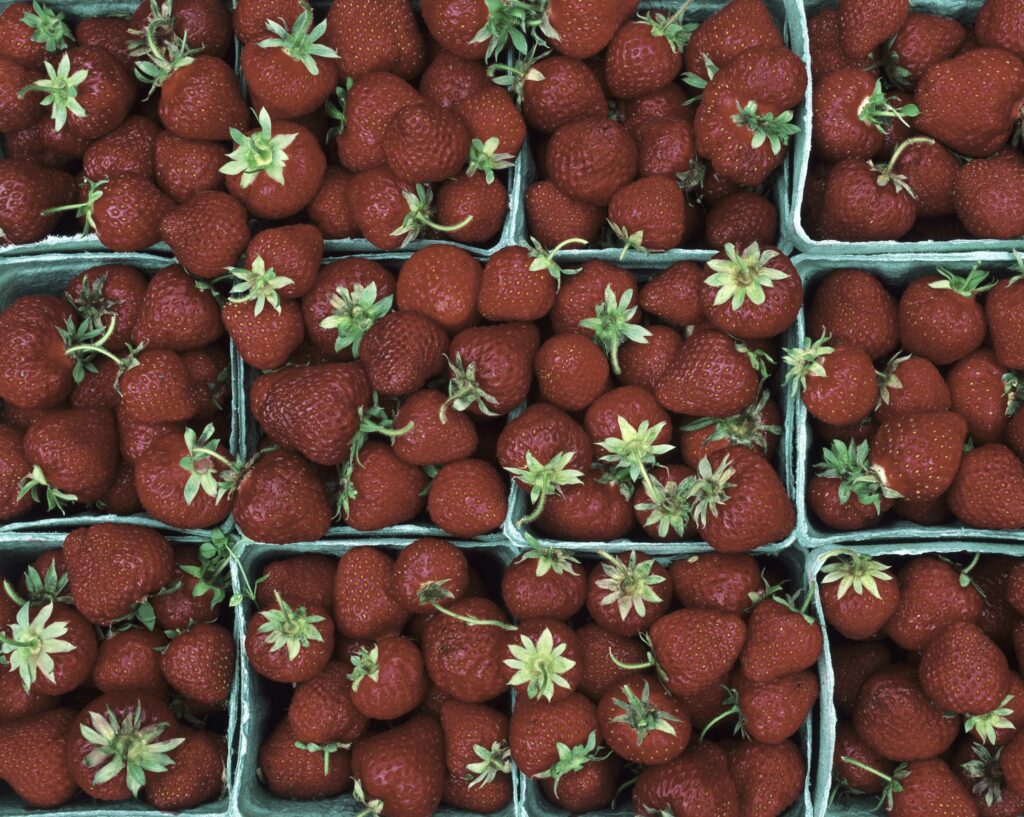It was the summer of 1996, my first on Martha’s Vineyard as a year-rounder, and I was standing on the worn pine steps outside the kitchen door of a house in the woods of West Tisbury. I breathed in, and, all of a sudden, I was thrown back to 1970, the summer after my parents’ divorce. I was overwhelmed anew with all the feelings that had characterized that summer — sadness about my broken family, apprehension regarding my mother’s and my upcoming move to a different state, delight and relief at being again on Martha’s Vineyard, where we’d come for a month every summer since I was six. What brought on this bout of intense nostalgia? The scent of wild blueberries, sweet and mingled with a humusy musk from the dirt that sustains them, wafting through the woods on a humid afternoon; wild blueberries, like the ones my mother and I would pick together almost daily during that summer when I was eleven.
My mother was a foodie long before the term was coined. She valued freshness and local-ness above all else, skewing always toward home-grown vegetables, our own chickens or birds and game my father brought home from his shooting outings, honey made by a beekeeper in the neighborhood, eels or shad that the door-to-door fish monger in Washington, D.C. told her he’d caught just that morning in the Potomac River. And she was a forager. We found blueberries together all over the Island. We’d be driving along, say, State Road between Vineyard Haven and West Tisbury, when, abruptly, she’d pull over onto the shoulder, grab a couple of paper bags from the back seat (my mother was always prepared), and say, “Let’s go! I smell blueberries.” We’d head into the woods, where, sure enough, we’d find a swath of wild, low bushes, and we’d pick until our bags were bursting. The berries were small, blue-black or a dusty lighter blue, and packed with flavor. (The darker berries may actually have been huckleberries, I now suspect.) We ate them on our breakfast cereal, spooned over vanilla ice cream at lunch, and — my favorite — cooked up in one of her famous blueberry crisps for dessert after dinner, blue juices bubbling up around the edges of the buttery, sugary topping.
That summer, my mother and I were staying in a rented house in Chilmark that came with access to a little beach in a deep cove. To my mother’s delight, the boulders that poked up from the water in that cove were covered in mussels. She taught me to pick only the largest ones (“Leave the smaller ones for next summer!”), and she had a theory that the ones growing below the low-tide mark were preferable (though I’ve since read that mussels that get exposed to air when the tide goes out are fine, too, since they hold water inside their shells to stay hydrated.) We’d take colanders to the beach with us when we were musseling, and then we’d bring our catch home, and she’d steam them in white wine, garlic, and herbs, and serve them alongside a cup of melted butter for dipping. They were deep orange, flecked with green bits of parsley, and they tasted like little pillows of ocean-ness.
The scent of wild blueberries, sweet and mingled with a humusy musk from the dirt that sustains them, wafting through the woods on a humid afternoon; wild blueberries, like the ones my mother and I would pick together almost daily during that summer when I was eleven.
My mother’s daughter in more ways than I ever imagined I’d be, I’ve become just the kind of foodie she was: local and fresh are my guiding principles. I have a tennis-court-sized vegetable garden at my home in West Tisbury, and for the past two years, I’ve been growing with a view to preserving my garden bounty so that I can eat my own, home-grown produce as much as possible year-round. (See my Garden to Table columns here.) I freeze peas, beans, grated zucchini, and pesto; pickle and can tomatoes, beets, cucumbers, and carrots; store onions, garlic, and butternut squash on shelves in my basement; and keep cabbages, kohlrabi, and daikon radishes in the fridge, where they last for many months.
But despite the environmental and pocketbook benefits of eating one’s own canned tomatoes in February, there’s nothing quite like eating a vegetable that was picked twenty minutes ago. Arugula fresh out of the garden is an entirely different green than what you find in stores — so peppery it’s almost hot. Just-picked asparagus are so sweet, juicy, and crisp that my husband and I eat them raw, usually while the rest of dinner is cooking. And a big, pink Brandywine tomato still warm from the sun? Slice it, throw it on a piece of garlic-rubbed toast with some fresh basil, a sprinkling of salt, and a drizzle of good olive oil, and you might as well be in Italy. Or maybe Heaven.
I almost never visit the produce section of the grocery store during the months when my garden is yielding its gifts; rather, I plan meals around what’s ripe at the moment. But I don’t grow everything, and some years, certain crops don’t do well for one reason or another. That’s when I visit the Island’s farms. Rusty at Ghost Island Farm has managed to extend his tomato season on both ends using greenhouses, so I’m a regular at his farmstand when he’s got tomatoes and I don’t. Last summer, when an explosion of chipmunks ate more of my tomatoes than we did, I frequented Ghost Island all summer long to make up for my shortfall.
My mother valued freshness and local-ness above all else, skewing always toward home-grown vegetables, our own chickens or birds and game my father brought home from his shooting outings, honey made by a beekeeper in the neighborhood, eels or shad from the door-to-door fish monger.
I gave up on growing potatoes after a few years of worm-ridden harvests, so now I get my potatoes from Morning Glory Farm. Their purple potatoes are my favorites, for both their eye-catching color and their nutritional content (as a rule, the darker the vegetable, the higher it is in nutrients.) Our favorite way to eat potatoes comes from my friend Injy, who twice-cooks them to crispy, decadent perfection. First, she boils them until they’re tender. Then, she smashes them into thick little pancakes with cracked edges, puts them in a baking dish with some generous glugs of olive oil, and bakes them until they’re crunchy on the outside but pillowy soft on the inside. I could live on those.
Morning Glory Farm is also almost everyone’s go-to place to buy local corn when it’s in season. (See our story on corn on page 38.) Corn salads seem to be on the menu at every late summer dinner party I attend, and that makes me a happy guest; because really, who doesn’t love a good corn salad, say, laced with fresh basil and some halved sungold tomatoes? But my favorite way to eat fresh corn is on the cob, slathered in butter and sprinkled with salt. I always thought white corn was sweeter than yellow corn (though evidently many other people believe the opposite), but that turns out to be a myth: Corn color is caused by the presence of more (or less) beta carotene, which does not affect flavor (though it does increase the corn’s nutritional value, since beta carotene turns into Vitamin A when digested). Sweetness is most affected by time: The more hours elapse after picking, the starchier (and less sweet) an ear of corn becomes. But since people have been cross-breeding corn since the early 1800s to create varieties that hold onto their sweetness for longer, most corn you buy these days — even supermarket corn — is pleasantly sweet.
And strawberries? I’ve been losing mine to squirrels and birds for the past couple of summers, but this year I found them in June at North Tabor Farm, and they were so delicious that I went back every few days for more while they lasted. (Morning Glory Farm also has them, I’ve since learned.) Grocery store strawberries have been bred and modified to be huge, extra-firm, and long-lasting, but they’ve traded away a lot in terms of flavor and texture in order to be able to withstand shipping and several days of sitting in the produce aisle. Local berries, in contrast, are small, deep red, tender, and oh-so-juicy. They’re also quickly perishable, so you need to eat them right away… which, I promise, is never a problem.
In addition to eating as much as possible from my own and other Island gardens, I’ve resolved to eat local protein whenever I can. So far, nobody here is making tofu; but fish? Chicken? In both cases, you can’t go wrong eating local. Island-raised chicken (I’m partial to Mermaid Farm’s and North Tabor Farm’s) is hormone- and antibiotic-free, cage-free, and all (or most) of those other good things conscientious buyers look for on grocery store chicken packages. And, as with local vs. grocery store strawberries, the flavor of a local chicken is richer, more complex, more … chicken-y. When I ate chicken from grocery stores, I always thought of it as a largely neutral-tasting vehicle for sauces, rubs, and other accompaniments. Not so with local chickens. Our favorite way to prepare a bird from North Tabor or Mermaid Farm is to cut it in half and roast it in a smoky grill. My husband, the grill master in our household, does this to perfection. The smoke permeates the meat deliciously, and it’s always tender and moist with the oils from its own fat. No sauce is required (though we do often serve it with chimichurri on the side, made from my own garlic, oregano, and parsley.)
As for fish, we tend to buy whatever the fishmonger tells us was caught locally that day. Sea bass, bluefish, tautog — they’re all scrumptious when super fresh and simply cooked. One of my favorite local seasonal catches is squid. We tried jigging for squid once with a friend, with no luck. Evidently you have to be in the right place at the right time, and we weren’t. Fortunately, the fishermen who supply our local markets seem to know better than we did, and when fresh local squid comes in, we snatch it up. Again, we like it best done in our smoky grill, seasoned only with a little lemon brine (from the ever-present jar of homemade preserved lemons in my fridge), olive oil, and pepper. When it’s really fresh, squid is tender, not chewy, and it goes very nicely on a bed of white beans cooked with rosemary and lightly mashed.
Our absolute Number One favorite local fish is bonito. The first time I had it, a neighbor who’d just caught one brought it over, sliced it raw, and served it with a drizzle of soy sauce; it was the best sashimi I’d ever eaten, melt-in-your-mouth tender with a mild but distinctive flavor that spoke of whitecaps and seaweed and beams of sunlight streaming through the water into the depths.
Our absolute Number One favorite local fish is bonito. The first time I had it, a neighbor who’d just caught one brought it over, sliced it raw, and served it with a drizzle of soy sauce; it was the best sashimi I’d ever eaten, melt-in-your-mouth tender with a mild but distinctive flavor that spoke of whitecaps and seaweed and beams of sunlight streaming through the water into the depths. That’s still our preferred way to eat bonito, but we’ve discovered that it’s also great very lightly seared, sliced, and served drizzled with both soy sauce and truffle oil, which turns it into a richer dish that can only be described as luxurious.
Meanwhile, since I haven’t found any wild lowbush blueberries near my house, I planted several highbush varieties in my yard. Most of them have grown nicely and yield quite a lot of berries… which, every year, the birds get to before we do. Year after year, I vow that next summer I’ll wrap them in netting to deter the avian gourmands, and year after year, I fail to do it. There’s so much to occupy me in my vegetable garden that I simply run out of time. Maybe one day I’ll get to it, but for now, I’m happy just remembering the blueberry crisps of my childhood.



